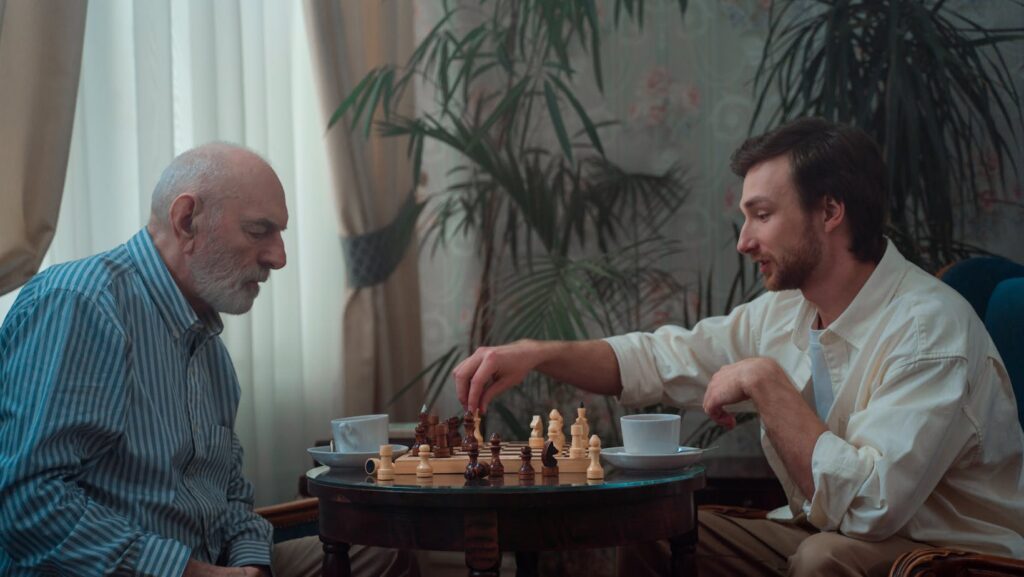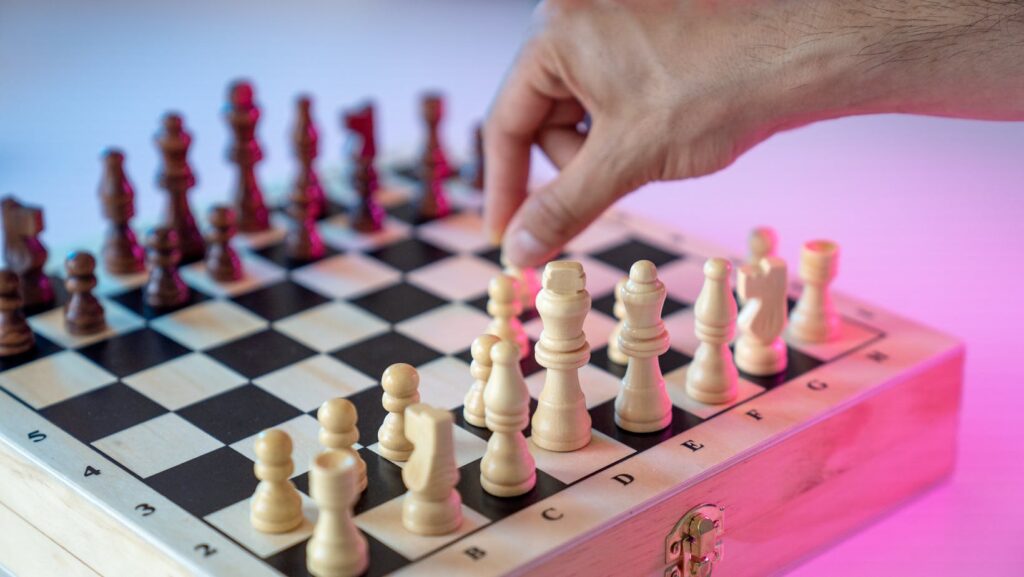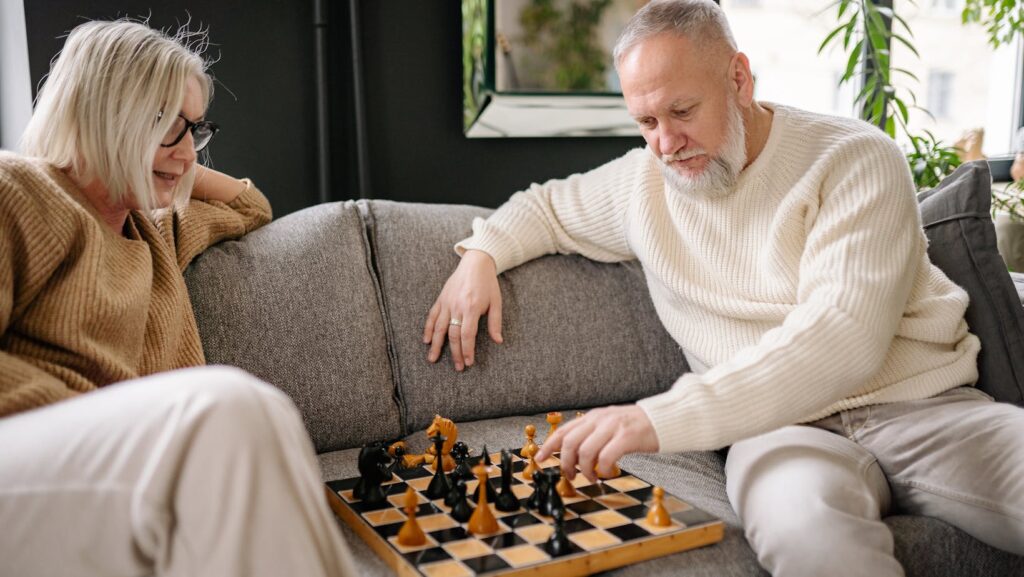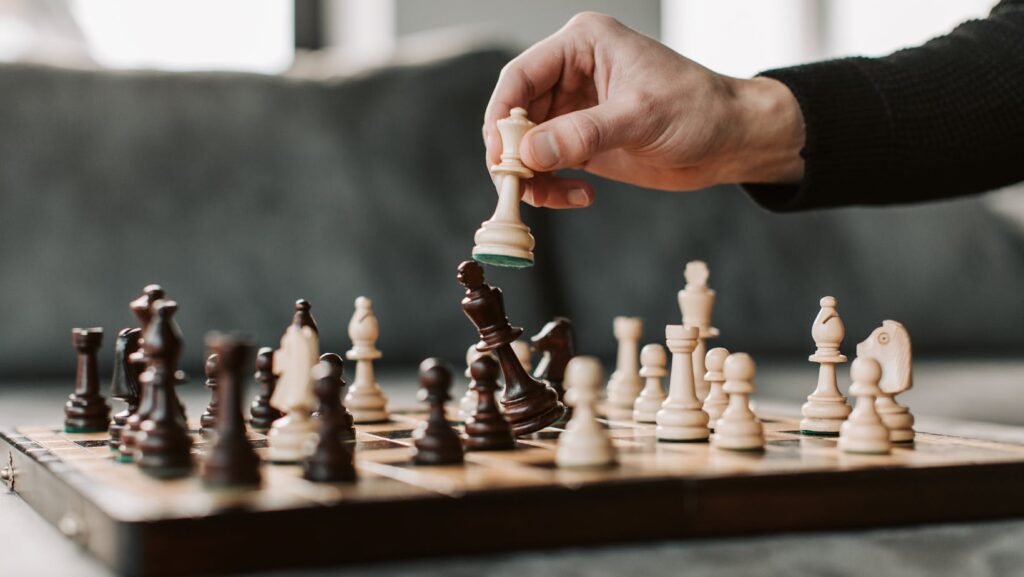Chess isn’t just a game; it’s a battle of wits, strategy, and careful calculation. It’s a test of mental agility where brutish moves often lead to swift defeat. If you’ve found yourself on the losing end more often than you’d like, it’s how to be more strategic and less brutish in chess.
How To Be More Strategic And Less Brutish In Chess

In the realm of chess, a strategy doesn’t exist merely as a concept. Instead, it provides a framework for every move made. Chess players who incorporate strategic thinking devise a plan: they look at the whole board and decipher the alignment that best benefits their pieces. They use this approach but simultaneously remain flexible, adjusting their plan in response to their opponent’s maneuvers.
Take chess masters, for instance, they plan each move 5 to 10 steps in advance. That’s the power of strategic thinking, transforming chess from a mere game into a battlefield where every decision matters. That’s why understanding chess strategy isn’t just about knowing how to be more strategic and less brutish in chess.
Key Principles of Strategic Chess Play
Importance of Piece Development
Piece development marks a crucial component of strategic chess play. It revolves around bringing one’s pieces into effective positions quickly and efficiently. At the game’s onset, minor pieces such as the knights and bishops bear the most significance. These pieces are typically deputized first to control the central squares. In chess, a well-developed piece poses a greater threat to the opponent, enhancing the opportunities for tactical strikes.
Controlling the Center

In chess, controlling the center of the board usually equates to seizing control of the game. The four squares at the board’s center—d4, d5, e4, and e5—are the battlegrounds for this war of attrition. Chess pieces stationed in the center command greater mobility, reaching a larger portion of the board in fewer moves. Additionally, control of the center can constrain the opponent’s movements, providing a tactical advantage. As an illustration, a knight positioned at e5 can attack up to eight squares, compared to only four when placed at a8.
Managing Pawn Structures
Pawn structures, in many ways, define the terrain of a chess battlefield. Proper pawn management contributes to various strategic factors, including space control, piece mobility, and king’s safety. Players aim to create resilient pawn chains and avoid weaknesses such as isolated or doubled pawns. For example, a pawn chain extending from b2 to d4 restricts the opponent’s bishop movement, therefore setting ground for potential tactical opportunities. Conversely, an isolated d4 pawn could become a target, creating a defensive liability for the player.
Tips to Enhance Your Strategic Thinking
Incorporating Prophylaxis
Prophylaxis, a strategy involving prevention of opponent’s possible threats, plays a vital role in chess. The focus isn’t solely on planning an offensive, but also contemplating the opponent’s future moves. By reading the game, a player preemptively addresses potential situations, strengthening their position while disorienting the adversary.
To incorporate prophylaxis, one must develop keen observation and critical thinking skills. Understanding the opponent’s intentions allows players to stay a step ahead, disrupting their strategies.
Learning From Grandmasters

Grandmasters, the highest achievers in chess, serve as vital sources of strategic knowledge. Their games demonstrate a blend of tactical brilliance and strategic depth. Studying these games offers an in-depth understanding of strategizing and decision-making in chess.
From openings and mid-game to end-game strategies, Grandmasters provide invaluable lessons. For instance, learning Jose Raul Capablanca’s end-game style or studying Mikhail Botvinnik’s valuable notions on the center might prove beneficial.
A Strategic Endeavor
Mastering chess isn’t about knowing how to be more strategic and less brutish in chess; it’s about strategy. It’s about understanding the game’s intricate details, like piece development, center control, and pawn management. It’s about learning from the best, the Grandmasters, and incorporating their strategies into your game. But remember, while it’s beneficial to emulate these masters, maintaining your unique style is equally important.

